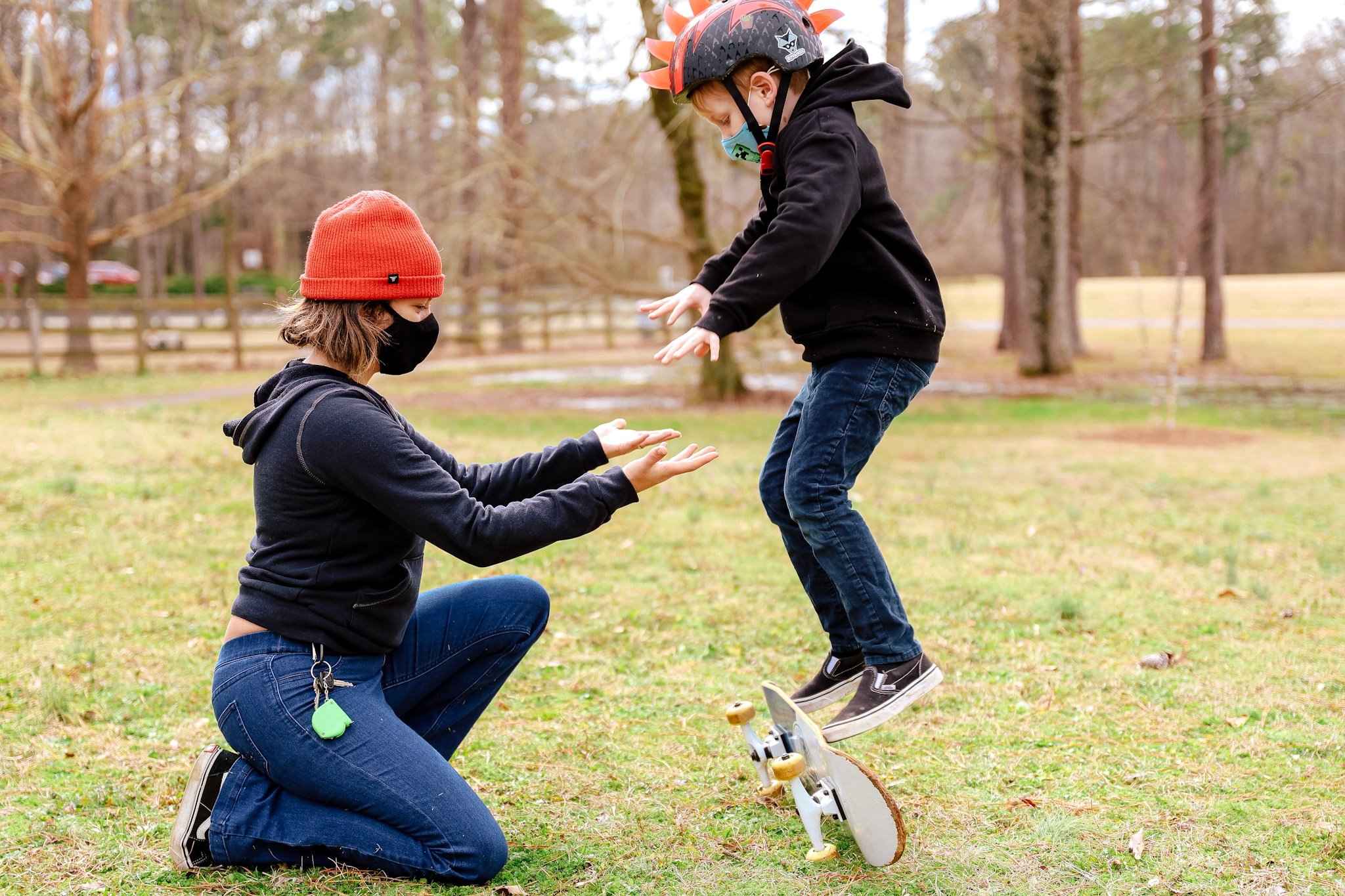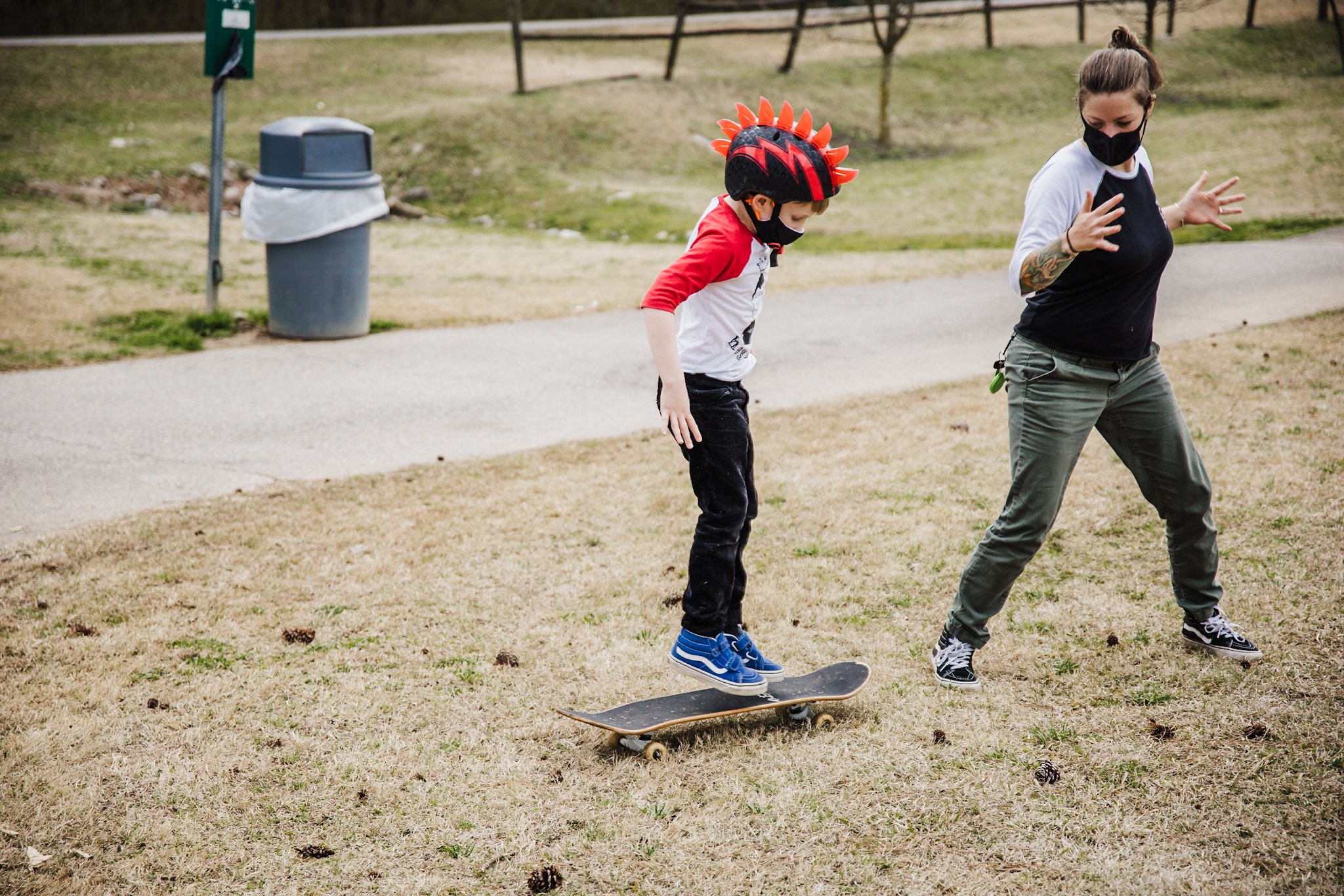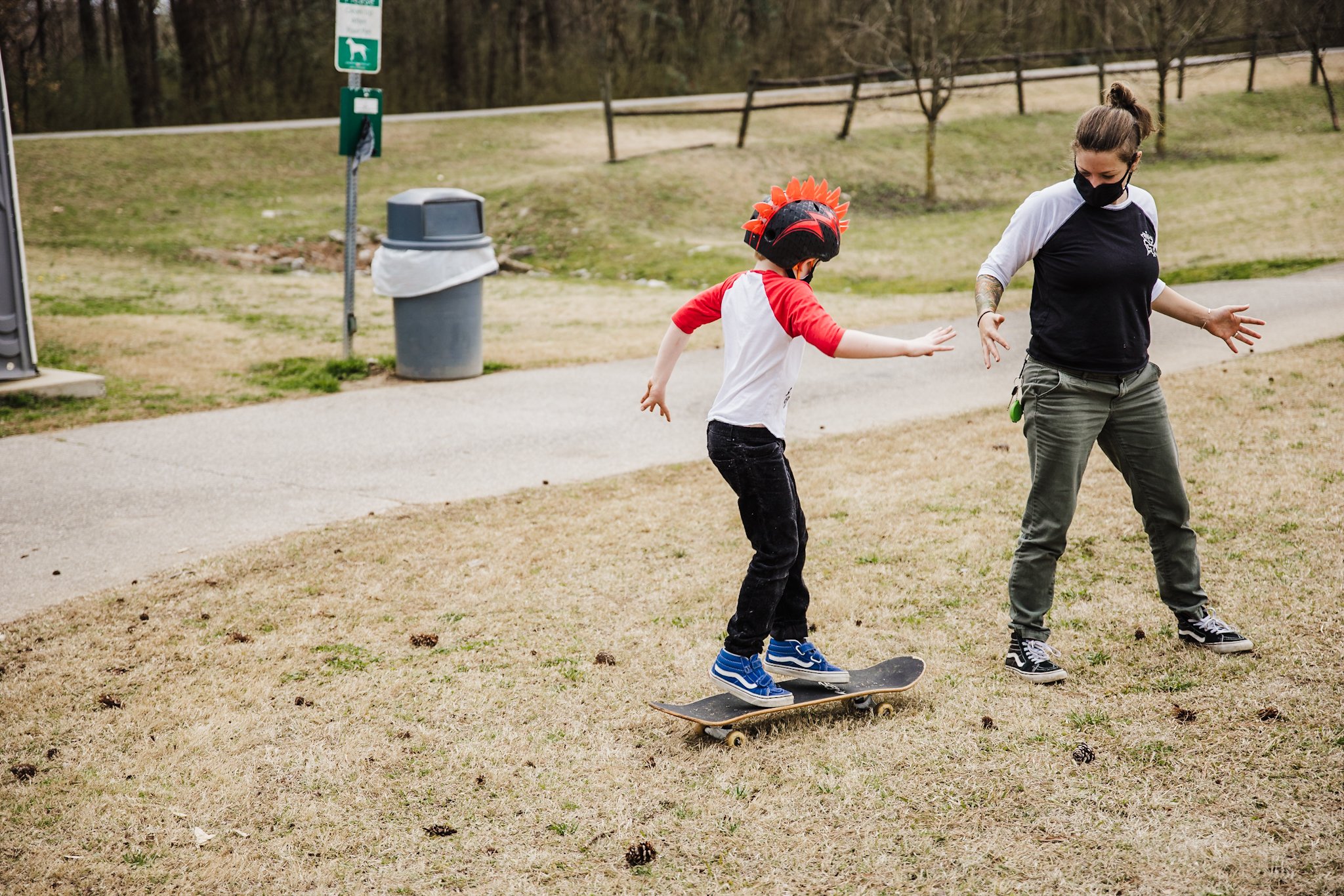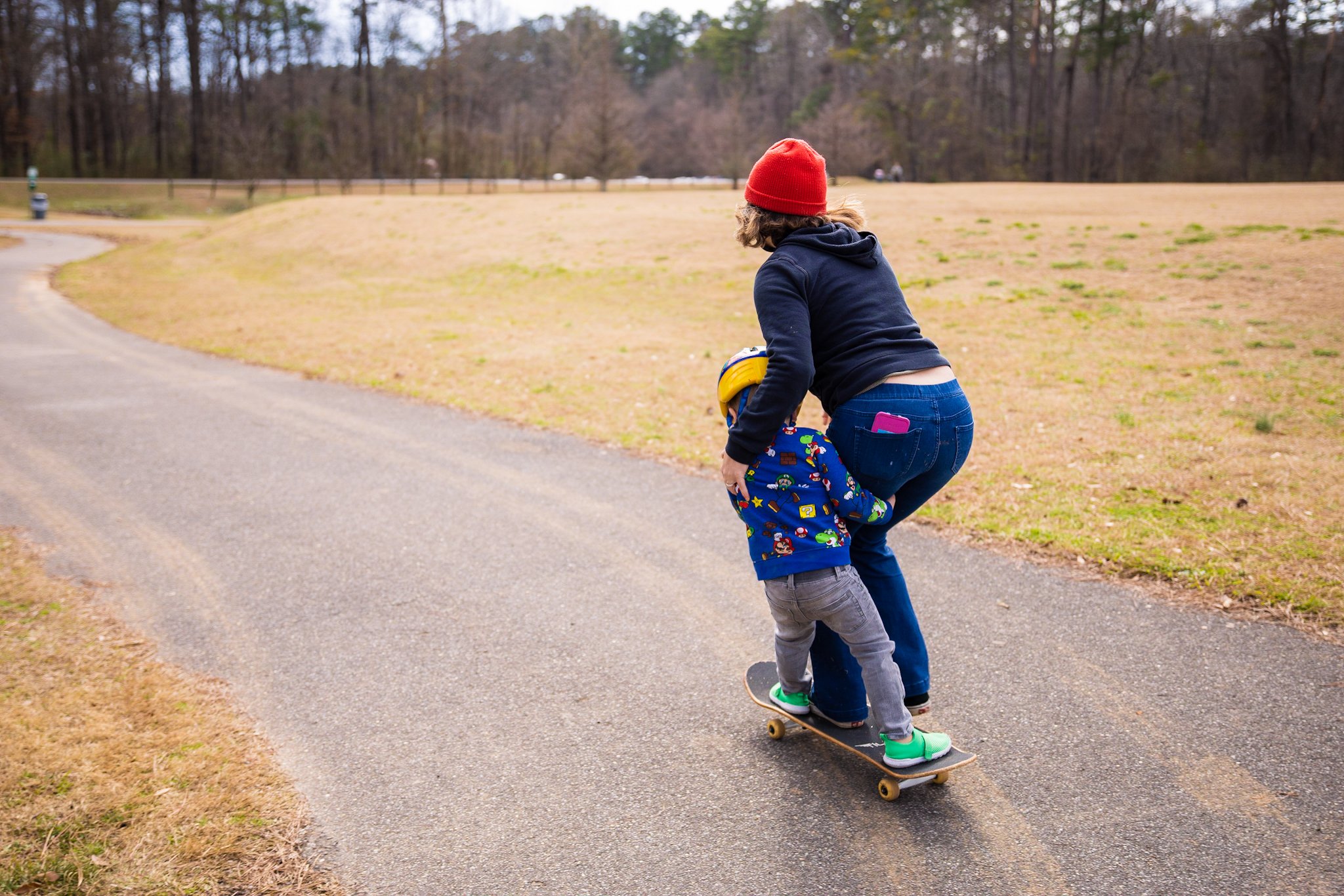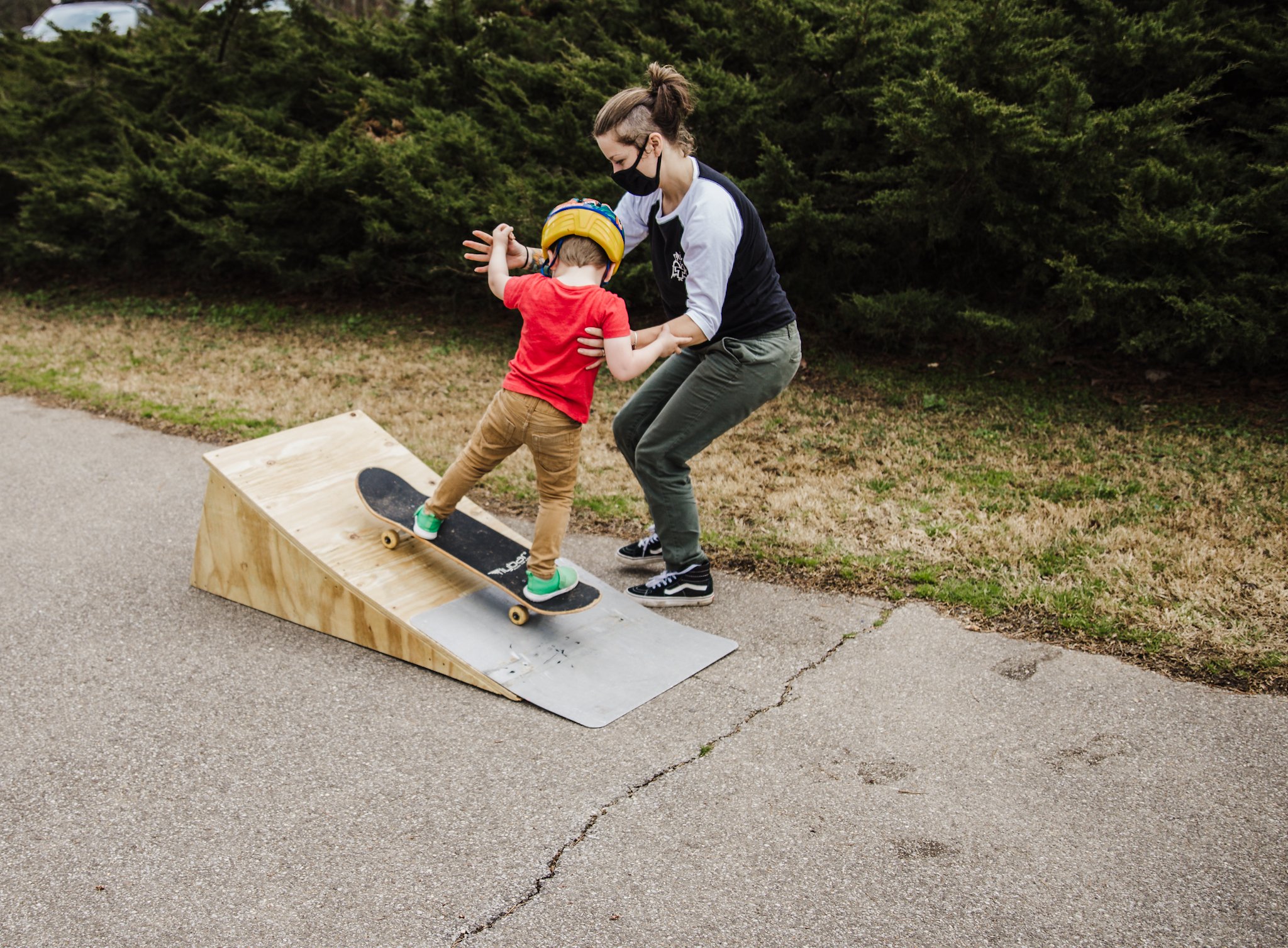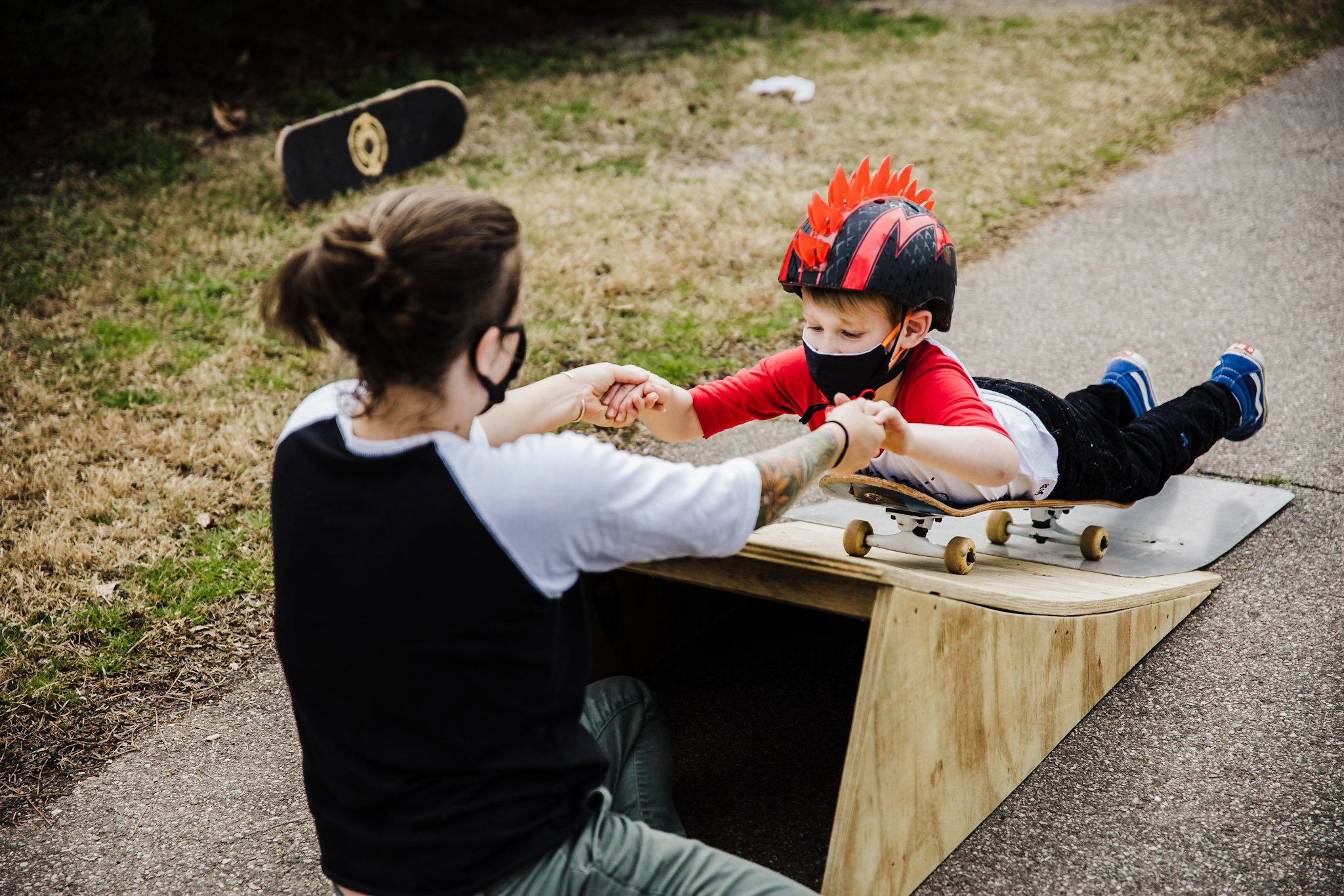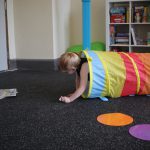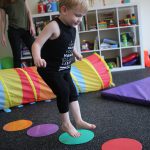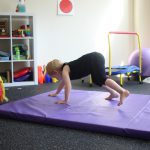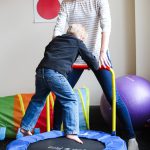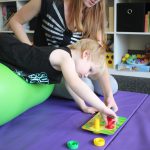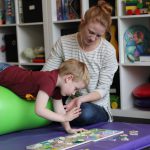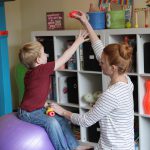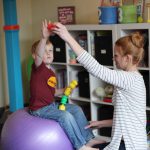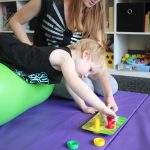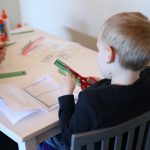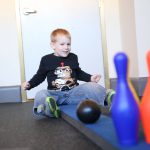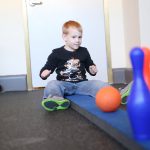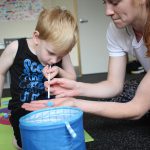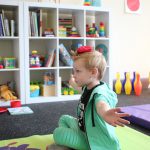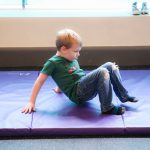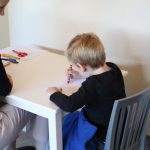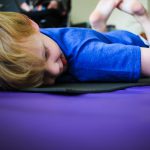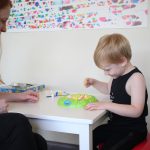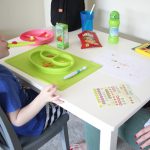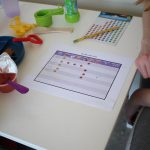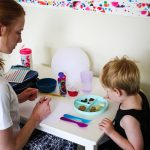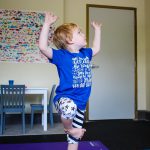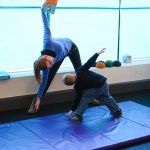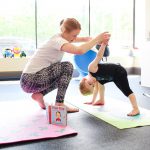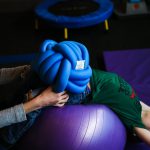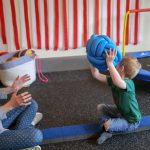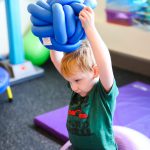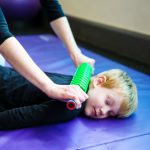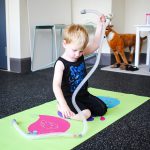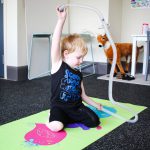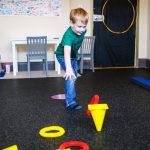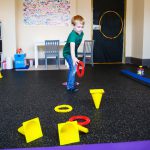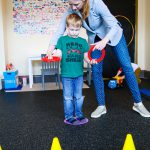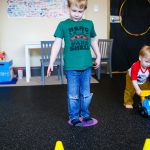Skateboarding On The Spectrum Read More »
The post Skateboarding On The Spectrum appeared first on Not So SuperMom VS Society.
]]>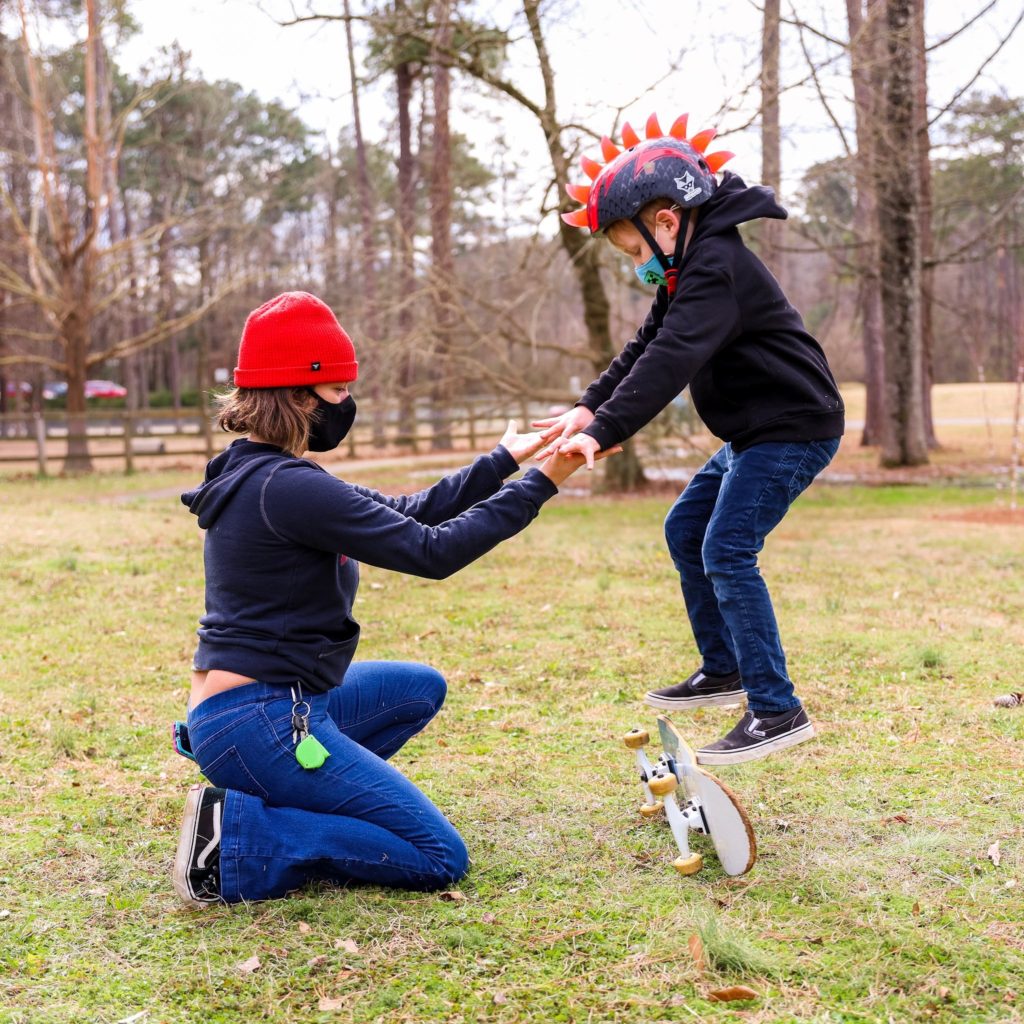
When most people think of skateboarding, their first thoughts are usually something along the lines of misfit teens, punk rock, or maybe even guys like Tony Hawk. What they don’t think about, is just how amazing skateboarding is for kids who need occupational therapy. Kids like Everett, who are on the autism spectrum. Kids like Finn, who need help with impulse control. So today I’m going to highlight the awesome benefits of skateboarding for kids with special needs.
Surprising Benefits of Skateboarding
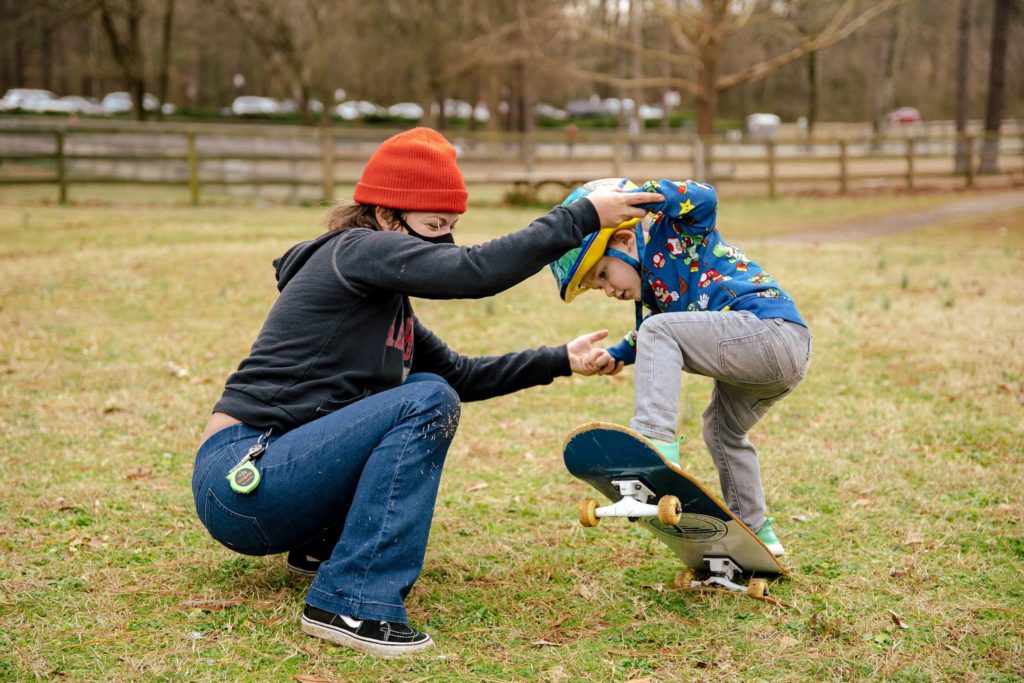
From the time children with autism are toddlers, they are placed into Occupational Therapy which is needed to develop motor, proprioceptive, vestibular skills and more. Skateboarding offers nearly every component of Occupational Therapy, which is why many of these children “crave” to skateboard. It stimulates parts of their brain that trigger focus, hand-eye coordination, and more. Here are just a few of the health benefits:
- Coordination – Skateboarding improves hand, eye, leg and feet coordination. When skateboarding, you need to alter your movements so you skate smoothly and accurately.
- Pain Tolerance – Other sports improve your pain tolerance, but learning how to skateboard includes constantly falling, tripping, cutting your knees and elbows, etc. Believe it or not, this helps to improve your tolerance and build up resilience.
- Stress Relief – Stresses consume people, even kids, all the time. Skateboarding is an avenue to relieve some of those stresses or frustrations.
- Precision – Skateboarding takes a lot of precision to master. You are constantly adjusting weight from one direction to another, switching your speed, and, when good enough, perfecting tricks.
- Reflexes – This one ties together with coordination. When falling or stopping quickly, you need to have quick reflexes to brace yourself or prevent a collision from happening. You learn quickly that running into a railing is not ideal.
- Patience/Behavior Management– Skateboarding, like other sports, requires an immense amount of patience. You will not be the next Tony Hawk after your first time on the board. Falling countless times, missing that tricky bend, and hitting that awesome trick will test your patience time after time. When a skateboarder is having a bad day, annoyed with the world, feels like he could punch through a brick wall what does he do? He skateboards. Same as kids with autism, when their impulse control is almost lost, their anxiety is through the roof, and the screaming and crying is about to begin, break out the skateboard and you’ll find that it helps them work through their current behaviors.
- Social Development- skateboarding allows those who struggle with normal social interaction interact with peers on the level the individual feels most comfortable with.
Skateboarding offers many components similar to occupational therapy such as focusing on motor, vestibular and proprioceptive skills. Saturday skateboarding lessons are quickly becoming one of the boys favorite things to do. Both boys have a weak core and crave high impact activities. Everett has poor motor planning and balance issues, while Finn has poor impulse control and anger issues. Skateboarding is helping tremendously with both. Learning self/impulse control and behavior management is a huge part in why I decided to start the boys with lessons. And perhaps, most importantly, it’s also pretty freaking fun!
Skateboarding has had such a amazing impact on kids with autism that there are several nonprofits that have been created to help connect and introduce skateboarding to those the spectrum. There are even studies that have popped up specifically to research the correlation of brain activity and heart rate between autism and skateboarding. It’s even been approved as an acceptable form of occupational therapy in several states.
Hopefully, with these studies and nonprofits, skateboarding will no longer be looked at as a rebellious pasttime by those who don’t understand it and more funding would be available for using skateboarding as a therapy rather that funding just another information autism organization out there.
I know that right now, the boys have found an outlet they both love and I couldn’t be happier with their awesome teacher and their continued progress. I hope they continue to find joy in skateboarding and that the benefits continue to carryover into other aspects of their lives.
The post Skateboarding On The Spectrum appeared first on Not So SuperMom VS Society.
]]>The post I Want To Die appeared first on Not So SuperMom VS Society.
]]>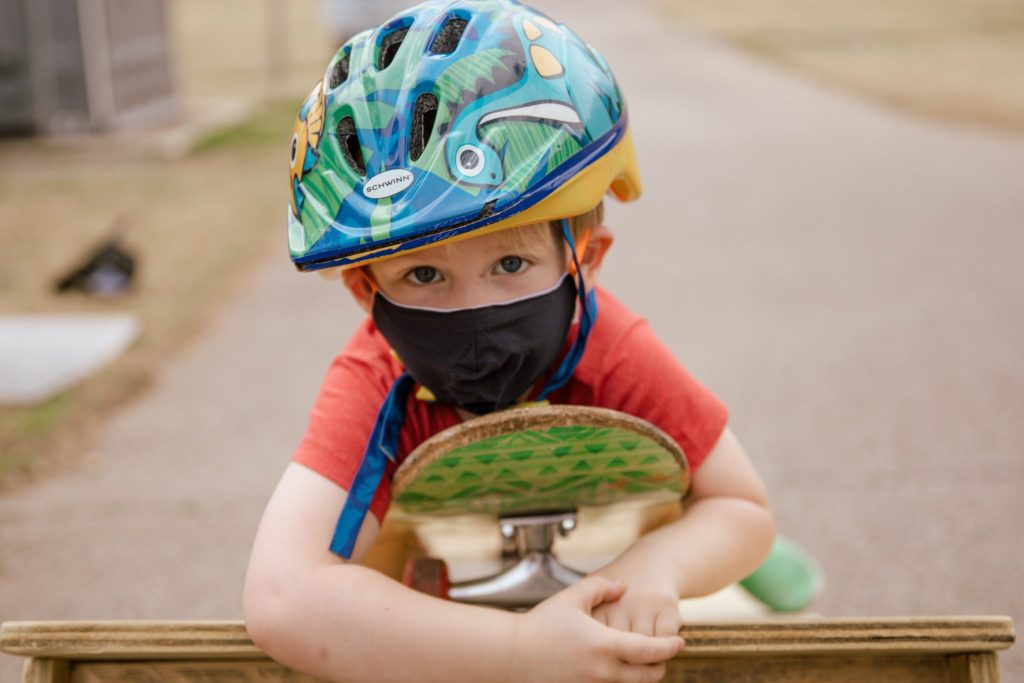
“I want to die. I don’t love you anymore and you’re not my friend anymore. I hate you.” These are about the last things you’d ever want to hear your child say to you, though you might expect it from an overly emotional teen. Unfortunately, I don’t have a teen and these words were screamed at me by my three year old, Finn.
Finn was recently diagnosed with ODD. ODD or Oppositional Defiant Disorder might be a term you’re not so familiar with. A quick Google search defines ODD as: an ongoing pattern of behavior that is characterized by anger, irritability, as well as argumentative and defiant behavior towards those in authoritative positions. I’m guessing that sounds like every 3, 4 and maybe 5 year old out there to you, right? Well, not so much.
If you go on to read further, this behavior can be something that kids only exhibit at home or at school, maybe not both. Also, it lasts for a long time, and happens quite frequently. More so than your typical child, even toddlers, as crazy as they are. And this is where I’d like share my story of being a mother to a child with ODD.
Donning My Armor
We’ve been dealing with the “I hate you’s” for a couple months now, but the “I want to die” is new, and it HURTS. Quite frankly,, living with and loving Finn is painful and hard. You have to develop a thick skin, or you’ll quickly devolve into tears. It feels akin to being in an abusive relationship- you never know what will trigger the next explosion, so you’re constantly walking on eggshells.
Before you rush to judgments and try to tell me that Finn “seems normal” or that he’s just “high spirted” so it clearly must be my parenting, I ask that you try to put yourself in my shoes. Raising Everett is tricky, but it’s nothing compared to Finn. Everett had clear issues that I was able to work with at home and therapy. He thrived once he started getting therapy, and unless you spend significant time with Everett, you may not even realize he’s on the autism spectrum. Finn is, for lack of better words, utterly chaotic.
I find myself dreading the simplest tasks with him. Taking him to a playground or friends house is a constant struggle. He manages to make EVERY SINGLE THING into a weapon. Sticks, blocks, trains, etc. I’m constantly waiting to see which child will be his next target. When he’s corrected, he frequently screams “I hate you” and I feel the eyes of other parents staring at me, silently judging.
Don’t get me wrong, he can be the sweetest and cutest child. He loves being snuggled by me and tells me the sweetest things about how much he loves me, but the second I say or do anything that upsets him, boom, the Finn bomb explodes with vitriol. I’m dodging toys while he screams insults at me, all because I asked him to do something simple, like pick up a toy. And this goes on all day. Twenty four hours a day, seven days a week.
I’ve officially been emotionally beat down.
No matter how well I put together my emotional armor, he still finds a way to get through my cracks. I’m to the point where I’ve officially been emotionally beat down. The thought of doing anything with him fills me with anxiety. I dread the thought of him getting older and even more potentially violent. I worry constantly about his future and if we will get lucky and he’ll “grow out” of it.
Don’t get me started on the mom guilt side either…You think to yourself, “Gosh, I’m such a horrible mom, I dread the park because I can’t just let him play, what’s WRONG with me”? And then things are bad, and you cry. And you feel so angry, and sad, and resentful. And hurt. You’re so hurt, that the next time your child wants to be with you, hug you, love you, it’s hard. Because you’re a human being with feelings, and it’s hard to let go. So then, you feel guilty. You feel guilty that you resent this child that you do love SO much, but that you don’t feel like “liking.” And then you find yourself pulling away. Because you’re scared of those feelings. So, somewhere, in the back of your psyche, subconsciously, you pull away. Shut down. Try not to feel because it’s too much. You feel alone. Isolated. People don’t understand.
You’re even at the point that when someone says, “I bet you love being a stay at home mom,” you feel angry. They’ve said nothing wrong, but in the back of your mind, you’re thinking, “HOW CAN YOU SAY THAT WHEN YOU KNOW WHAT I’M GOING THROUGH”? But, they don’t really know, do they?
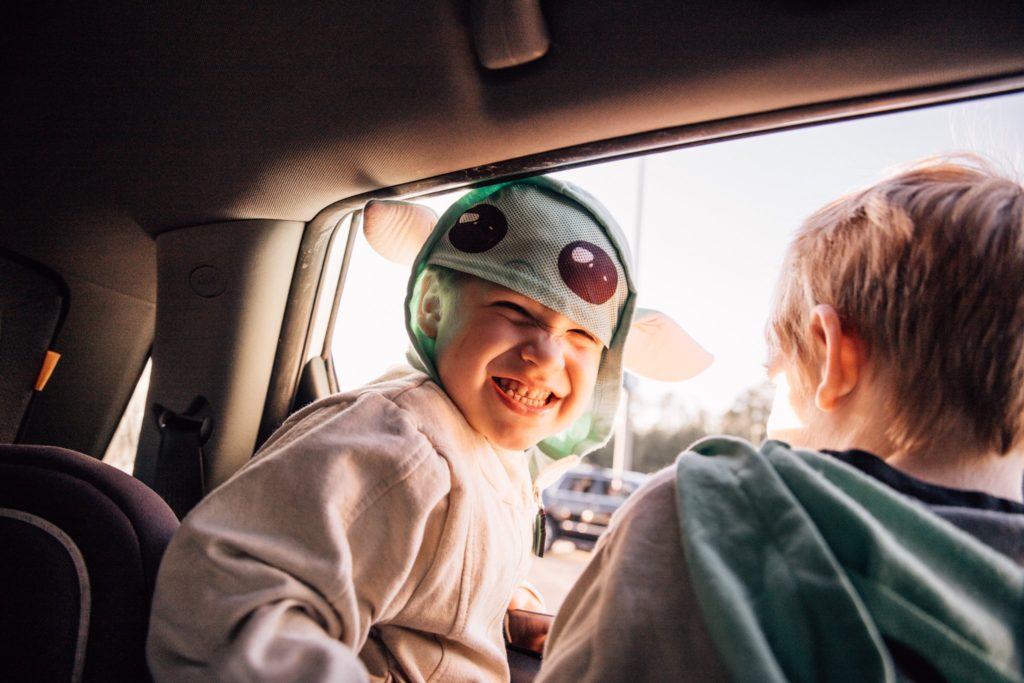
“He Looks Normal”
The rub of all of this? He presents so typical for short periods of time that I am already having issues getting him help through our school system. From the outside, things look OK. Here’s this beautiful, thoughtful, highly intelligent little boy, who can act like an angel for strangers. Can charm and be friends with any child around him. At home, that same child can be verbally mean, physically abusive, manipulative, and so defiant that asking anything of them is almost pointless. So, people think you’re overreacting. That you’re just overly sensitive to normal childhood behavior. And you start to think that maybe you are crazy. Not good enough. Inadequate. That it’s your fault.
There’s a Jekyll and Hyde situation going on. And nobody sees. And you can convince yourself that nobody cares and that you’re not going to make it. And if I’m being honest, I’m feeling like that most days.
Moving Forward
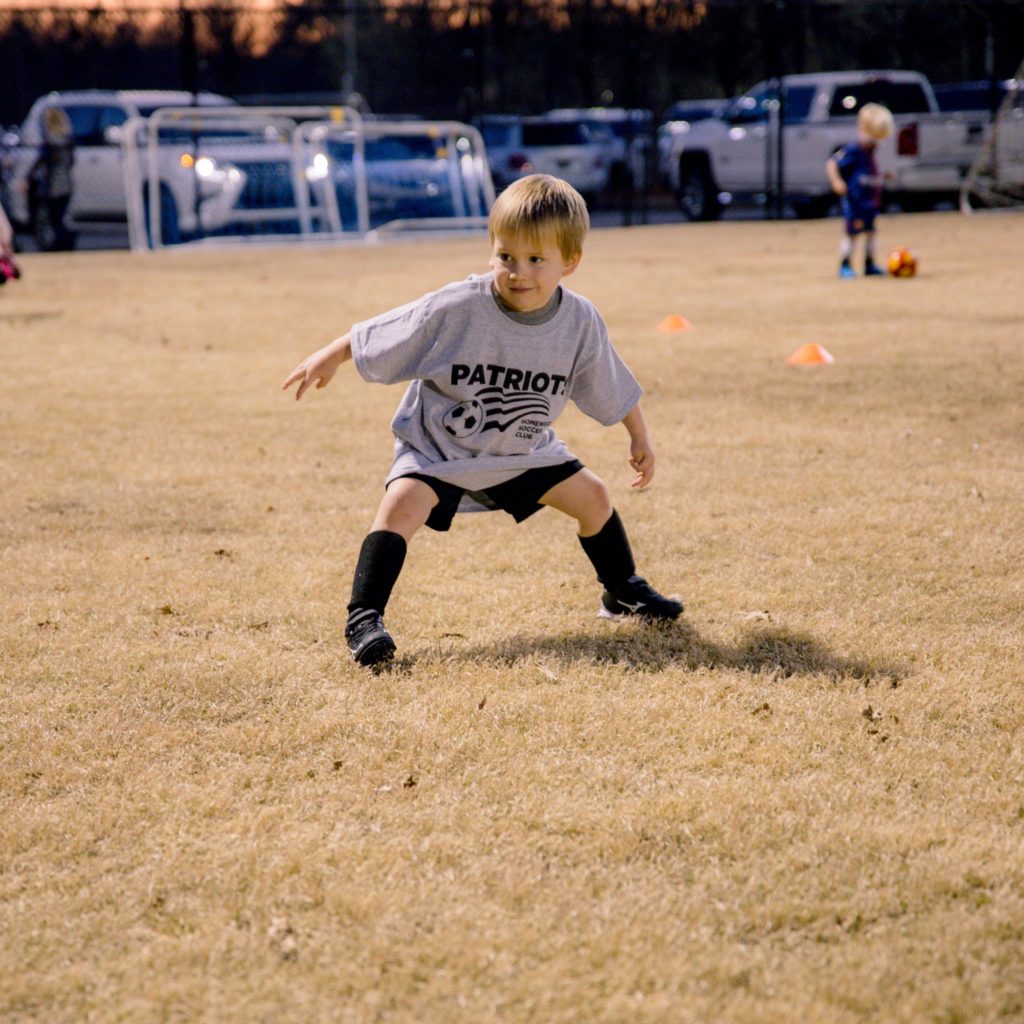
Right now, we’re in the trenches. Fighting every day, living our truth, being honest, getting help, and doing what we need to do to survive. That means getting him even more therapy and better methods for interacting with him.
We just had him screened and he didn’t meet the qualifications for general special needs, so we are having to get him tested for other issues his pediatrician thinks he may have. It’s so frustrating to know that he’s suffering from an invisible diagnosis and we can’t seem to get him the help that we so clearly need.
However, our story with Finn is just starting. I’m hoping it has a happy ending, but the harsh reality is that around 40% of children diagnosed with ODD don’t grow out of it and out of that 40%, half of them eventually develop antisocial personality disorder. So I’m going to fight like hell to try to avoid that path. I’m going to do what needs to be done to try to give him every tool he can use to battle this, and, I’m going to tell his story.
Why tell his story? People deserve to know it. Right now, I’m treading water, and sometimes find it overwhelming to do anything more, so I hope this reaches some people that are maybe struggling like I am. I’ve said this before, and I’ll say it again. Hearing the words, “I know what you’re going through” have such enormous power.
Welcome to our journey with Finn.
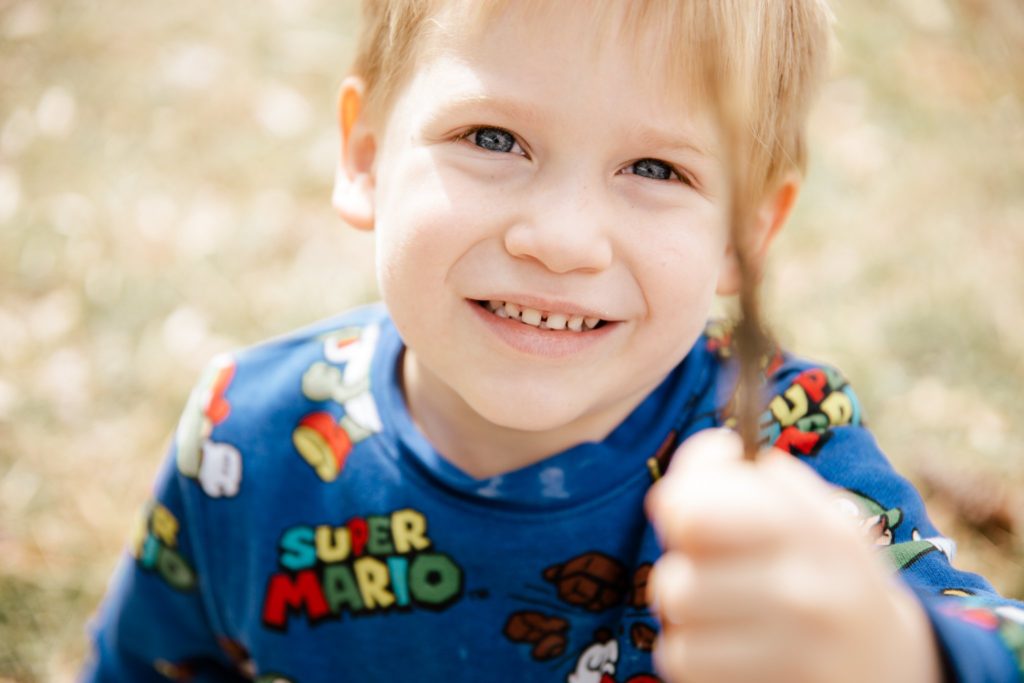
The post I Want To Die appeared first on Not So SuperMom VS Society.
]]>The post Teaching Empathy appeared first on Not So SuperMom VS Society.
]]>
This week, in addition to being cyberbullied, I also had to face the harsh reality that my son is perhaps the “bully” in his classroom.
I spend a few minutes every school day talking to his teacher so I can make sure that we are as much on the same page as possible. Wednesday she confirmed one of my biggest worries.
“The other kids in the classroom are starting to purposefully avoid Everett. They ask to not sit beside him. They move their trays away from him in the cafeteria”
My heart shattered into a million pieces. However, I wasn’t surprised. I had already noticed this happening in other places. Everett just can’t seem to keep his hands to himself. His version of playing is chasing other kids to the point they become afraid or aggressive towards him. He destroys their building projects, throws their toys to the floor, and touches them nonstop. I hoped that going to school would help with this, but it hasn’t. So far, he seems to focus this type of behavior on the same 1-3 kids, but no one is really safe from “Hurricane Everett.”
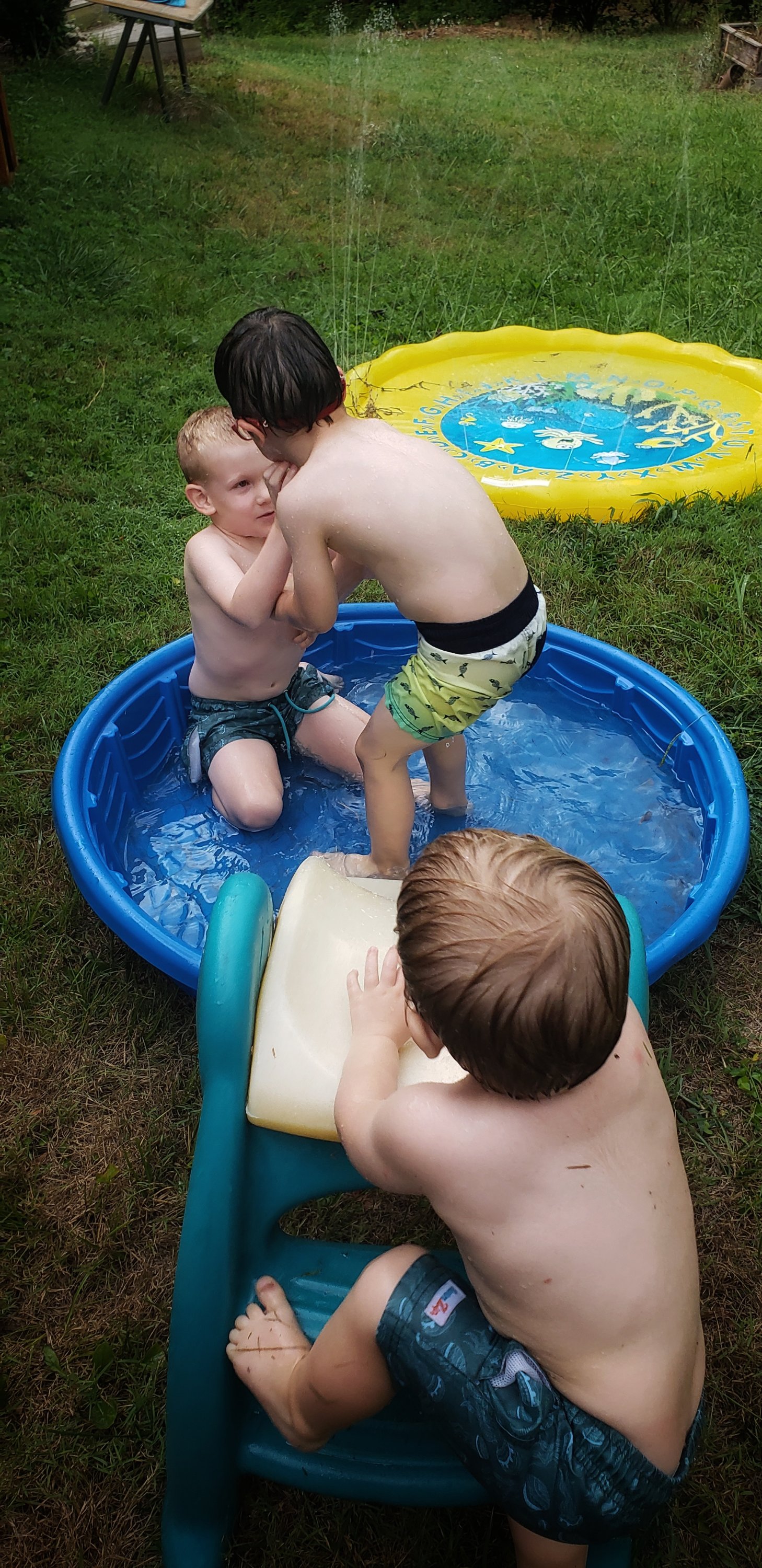
Worries About What The Future Holds
At this point, I’m at a loss. He has various therapy sessions, including yoga/impulsive management techniques, and we are making an appointment with a counselor, but I still worry that his impulse control issues aren’t going to get much better. It’s the one area that we haven’t seen much improvement in.
Yesterday, I was even talking to a friend about how I was afraid to get things like nerf guns, because I feel like I need to face the reality that it seems like kids like Everett are the type that become school shooters. Saying it out loud physically made me feel ill. Typing it isn’t much better.
Although Autism doesn’t cause agression, students with Autism tend to be the targets of violence and bullying. However, I worry that Everett’s constant struggles with the understood societal behaviors combined with his lack of impulse control puts him at risk. Risk of being alienated to the point where he feels his only recourse is something drastic like a school shooting.
I honestly don’t know how to get this thought/image out of my head. It terrifies me. It sickens me. It makes me cry.
Everett is truly a sweet and loving boy, but what is going to happen to him if he spends the next 10 years being systematically avoided by his peers? I can’t protect him from everything, no parent can do this, but I’m doing my damndest to prepare him.
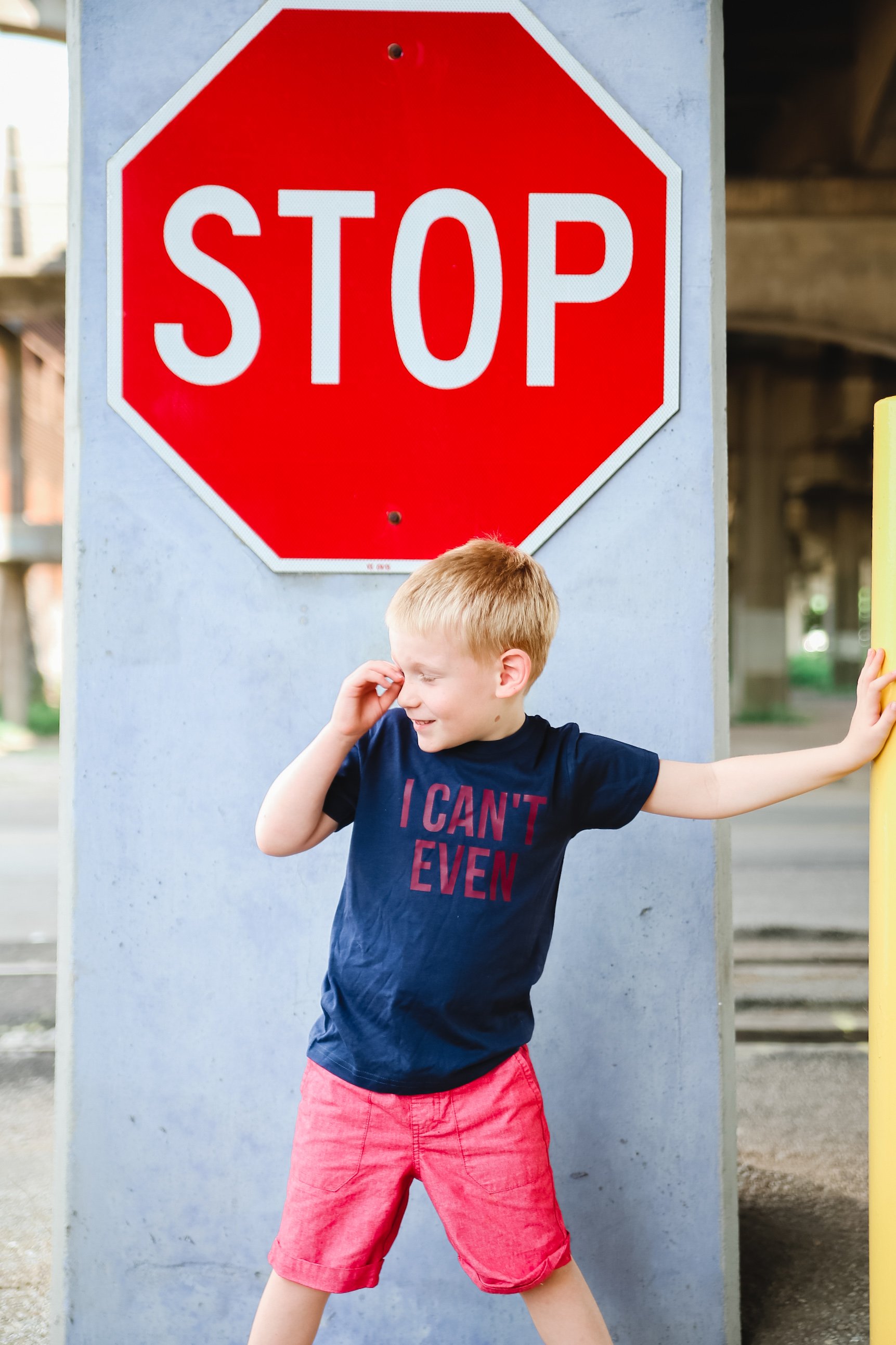
What You Can Do
Several people have asked me how they can help. It’s simple.
Teach your kids empathy.
Long story short, we pass our judgment making skills and biases onto our children. Teach them kindness, especially to those who are different from yourself. Teach them patience. Teach them about how those who are differently abled are not lesser individuals. Teach them about the weight of their words and actions.
Teach your kids empathy.

Like this post? Check out these rad bloggers below:
The MomFluence
Donuts & Drama
Fort Birthday
LoveErickaCastanos
The post Teaching Empathy appeared first on Not So SuperMom VS Society.
]]>The post In”Visible” appeared first on Not So SuperMom VS Society.
]]>
Today is the last day of Autism Awareness Month and I wanted to end with a bang. I want to talk about invisible disabilities. Autism is just a small slice in the invisible disability world, studies show that 96 percent of people who live with an illness live with an invisible one, and 73 percent of people who live with a severe disability do not use devices like a wheelchair. This means that when you look at them, you wouldn’t know that they’re disabled. Think about how many people you see who are clearly disabled during an average week. Statistically, for every person you’ve seen who looks disabled, you’ve seen at least 4 more who are disabled but don’t look it. Circling back to my soapbox, out of that staggering number, 1 in 59 of children recieve an Autism diagnosis.
They don’t look it.
So how can you tell? Often times you can’t unless you know what to look for, and even then it’s a gamble. It’s best to just be a decent, non-judgmental, and compassionate human being.
According to the American Occupational Therapy Association, sensory processing affects virtually all aspects of a child’s daily life, including motor coordination, school performance, and relationships. A child with sensory processing disorder could have 20/20 vision and perfect hearing, but when he’s in a crowded mall, his brain is not able to manage all of the auditory and visual information he’s receiving through his eyes and ears.
While each kid reacts differently to overstimulation, some will scream or become physically aggressive. What may look like defiance is just a kid doing his best to manage a stressful environment.
The assumption that a lack of discipline indicates a failure by the parent is totally without merit. Often times, people mistake sensory processing issues as discipline issues. No Karen, my child doesn’t need XYZ punishment, he needs calming techniques and resetting. Discipline will not prevent him from being overwhelmed by his environment.
I’m starting to learn that sometimes we just need to leave a playdate when Everett starts having meltdown signs. It sucks for everyone, but the last time we didn’t leave he bit a child. Twice. I’d rather be judged for “indulging ” my child than to have him physically hurt another child. It’s sad, because it seems like this is the beginning of feeling like I’m isolating him from the world.

I’m fortunate to have understanding friends who know Everett often doesn’t mean to be aggressive towards their children, but I get an overwhelming amount of judgment from others.
They see a perfectly normal child, who is aggressive towards their child, who doesn’t respond to normal societal behavior expectations and assume he’s a bad kid. They act shocked that this “horrible” kid is allowed to be at the playground. When I try to explain that he’s learning or on the spectrum I’ve gotten dirty looks.
When I try to calm Everett down I hear their snide remarks about how he’s bad because obviously I don’t know how to discipline him “correctly.” I hear them telling their child to not play with mine.
What I rarely hear are the parents using the moment as a teachable one. They could just as easily teach compassion and inclusion, but they often don’t. They act shocked by his diagnosis. I hear “he looks normal” “but he’s so smart.”
Just because you can’t see it, it doesn’t mean it’s not there
Autism can be invisible. This fact is a double edged sword. It will help my son in life, and it will hurt him at times. The fact that one cannot see his autism spectrum disorder, will at least impact how people will judge him. It will also leave him vulnerable to misunderstanding and unsolicited judgements. So much of how we deal with situations and people is based on our perceptions. Sometimes our perceptions are born from experience, knowledge and our personal ideologies. But sometimes they are born from fear, misunderstanding and ignorance.
When a parent is struggling to find a diagnosis, pay for therapies, or just get through the day with a kid who has an invisible disability, it is not helpful to insist nothing’s wrong because their kid looks so “normal” or that their IQ is so high. What may be intended as a compliment may come as a slap in the face to the parent who has committed precious time, energy, and money to her child’s disability.
Parents of kids with invisible disabilities are not just responsible for feeding, clothing, loving, disciplining, and teaching their kids. They must also advocate for their kids in a system that does not always have their best interests at heart.

Parenting is hard enough without adding other people’s assumptions to the equation. Parents of kids with invisible disabilities just want the world to know that it’s only okay to assume one thing: They and their kids are doing the best they can.
After all, human beings are not all cookie-cutter perfect nor the same. We all have different weaknesses and strengths. Therefore, instead of expecting everyone to fit the same mold, let’s look for each person’s individual, exceptional qualities and show them our admiration for their courage in the midst of their hurdles.
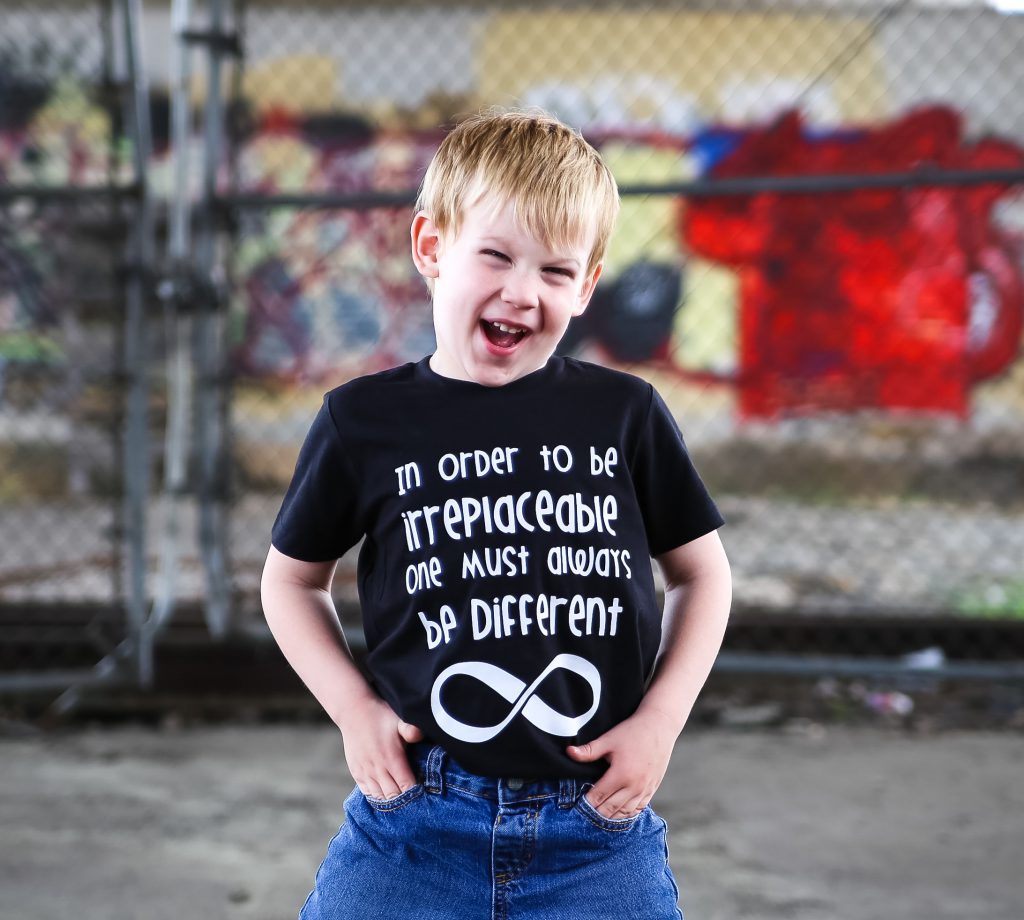
The post In”Visible” appeared first on Not So SuperMom VS Society.
]]>Benefits of Therapy Read More »
The post Benefits of Therapy appeared first on Not So SuperMom VS Society.
]]>What is occupational therapy?

Occupational therapy (OT) treatment focuses on helping people with a physical, sensory, or cognitive disability be as independent as possible in all areas of their lives. OT can help kids with various needs improve their cognitive, physical, sensory, and motor skills and enhance their self-esteem and sense of accomplishment.
Everett’s Therapy Routine
Everett receives OT 1 hour every Monday from Boost Kids (Shea). Shea has also helps him with feeding therapy and yoga. In addition to Boost Kids, he also receives 1.5 hours a week in therapy services from the local school system (speech, special ed, and OT).
A lot of what Everett’s therapy looks like is play. Which is pretty awesome, because a child’s most important job is playing after all. Everett needs extra help learning the appropriate skills and social interaction techniques to interact with other people.
Shea almost always starts Everett off with an obstacle course. This is one of Everett’s favorite things to do. He even pretends to make them at home (sometimes we do our own), or if we’re taking too long to start his session, he starts the course on his own! He loves his routines!
After the obstacle course they work on a variety of things from cutting skills to catching balls. They typically spend time working at the table (with things like drawing) and time working on more physical tasks. The physical tasks usually hit on a variety of areas, for example she’ll use a peanut ball and have him stretch to grab a puzzle piece with one hand and find it’s appropriate spot. She has him rotate his hands to work on motor planning, build muscle strength, and obviously the puzzle helps with more cognitive areas. Something you may not realize is that children with autism often have poor muscle tone, which leads to issues with balance in addition to limiting their fine/ gross motor skills. This is why the physical activities she provides are so important.
These types of activities that hone Everett’s fine and gross motor skills are really helping him to catch up to his peers.
When we started with therapy, Everett had issues with things like cutting, jumping, crab walking, and blowing bubbles. It wasn’t that he was incapable of learning it, he just lacked the motor planning capabilities. Over the last year he has grown leaps and bounds. He’s even crab walking on his own!
Shea just tested him for his yearly evaluation last week. He’s in a much higher percentile and scoring almost average in some categories! I’m so proud of him and his progress. Here are a few photos from his testing process. I loved being able to watch his skills and reasoning process.
Feeding Therapy
Here are a few photos from our feeding sessions.
When we do a feeding session, it’s always 30 minutes feeding and 30 minutes yoga. Feeding Everett is a challenge. He doesn’t eat most meats, veggies, and carbs. His diet is mostly hummus, guacamole, and fruit. We discontinued feeding therapy in the fall because we thought he was doing better and he was going to therapy right after school/lunch, so getting him to eat right away was tricky. Unfortunately, it’s starting to get worse again, so it’s looking like we’ll be starting up again soon.
Yoga
Boost Kids also offers children’s yoga classes. This is such a awesome thing. Yoga helps Everett strengthen his muscles, work on breathing skills, and he LOVES it! Every once in awhile, Everett will even request yoga during a regular OT session. Shea is awesome about accommodating his requests. One of the reasons why we love going to Shea is that she really goes out of her way to make Everett happy while still helping him achieve his therapy goals.
Yoga is truly one of Everett’s favorite things now. He brings his yoga pose knowledge home and loves working on various poses at home. His favorite is tree pose!
Home Therapy
The therapy doesn’t stop at those places either, we bring it home with us and utilize it when we can. One of the reasons we love Shea, aka Boost Kids, is that she’s willing to work with me to teach me strategies to use at home. We bring in a lot of equipment, especially from our favorite sensory shop, Fun & Function.
Here are some cool items that Shea has recently helped us with (all items can be found at Fun & Function):
Here is a weighted knot ball. Everett fell in love with this at Fun & Function HQ, and I asked Shea how to best use it for Everett. She showed me how to give him a workout with it, by having him lift it up and down a couple times and by throwing it back and forth. She also used it as a weighted lap pad while he did situps. She also suggested letting him hold it during screentime.
One of our favorites, is this compression roller. It almost instantly calms Everett down and it’s so fun to look at. In addition to rolling it across his body, he also rolls it across the floor when he does “push ups.”
Another favorite is this cool marble tracker. Everett likes to twist it into puzzles/knots and solve it. Shea recommended having Everett take lead here, limited only by his imagination!
Here we have sensory twists. This was one of the ones that stumped me. They looked fun and Everett liked squishing them, but I needed some fun activites to use them with. Shea set up little cones and let him bowl with them as well as toss them on the tops of the cones. It was such a fun game and easy to recreate at home, especially for our obstacle courses! She also said it could be a fun item for bathtub sensory integration, but we haven’t tried that yet.
We incorporate a lot into Everett’s home therapy, but we also have a lot of fun too. I try to make the activites fun, sensory friendly, and a learning opportunity. I’d love to talk more about our cool sensory stations and rad therapist, but alas, it’s bedtime and the wee beasties are definitely showing their inner monsters!
The post Benefits of Therapy appeared first on Not So SuperMom VS Society.
]]>